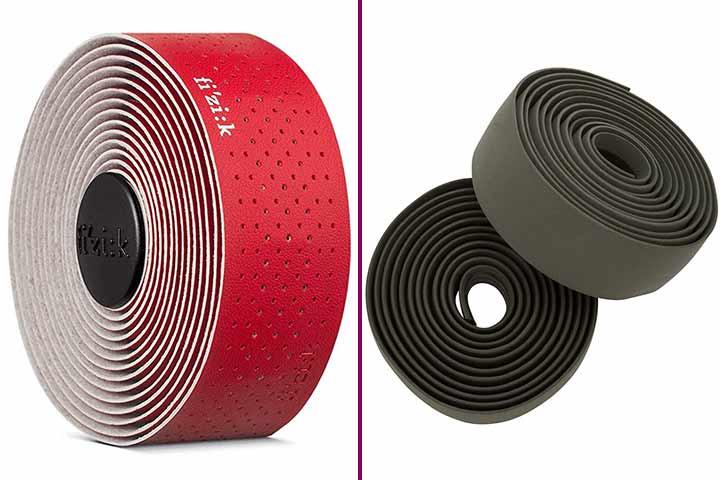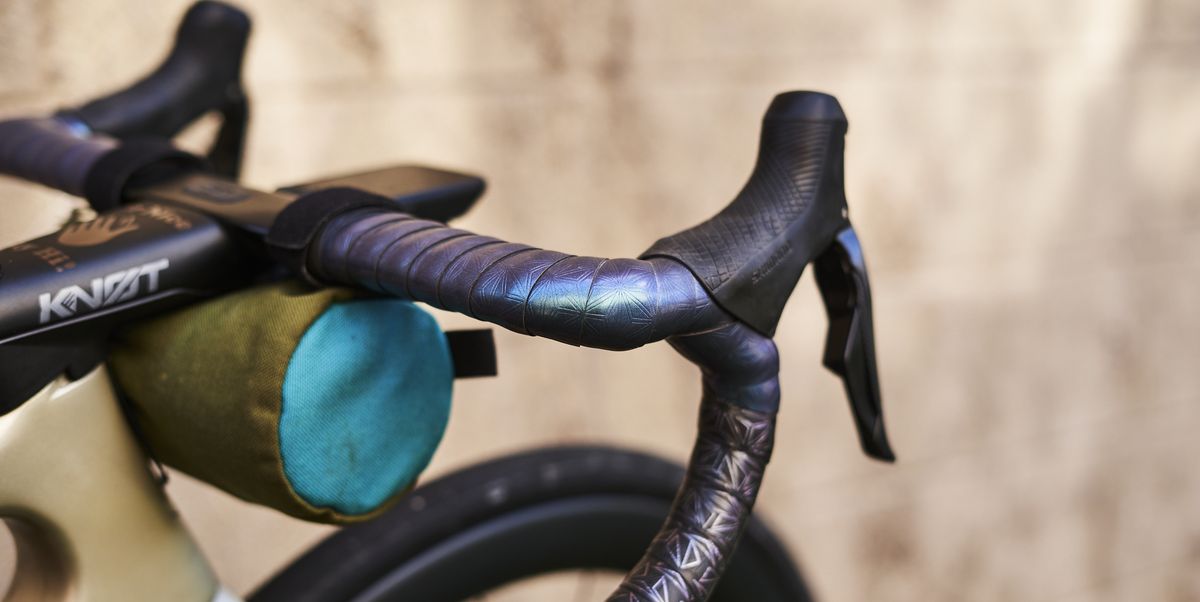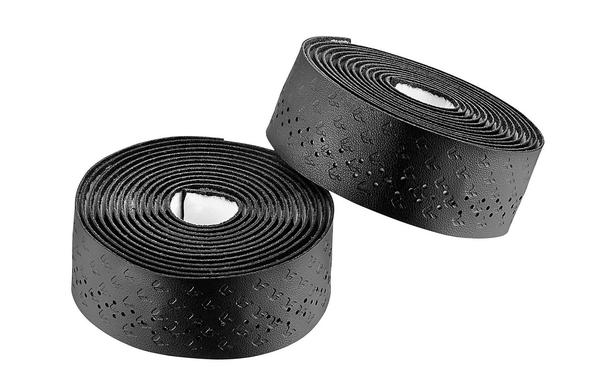The Significance of Selecting the Appropriate Handlebar Tape
When it comes to enhancing the overall cycling experience, the role of handlebar tape cannot be overstated. As a crucial point of contact between the rider and the bike, handlebar tape significantly impacts comfort, grip, and aesthetics. Upgrading from stock handlebar tape to a more suitable option can lead to noticeable improvements in performance and enjoyment. This guide will help you make an informed decision about selecting the right tape for bike handlebars, ensuring a more comfortable and visually appealing riding experience.
Understanding Handlebar Tape Materials: A Comparative Analysis
Selecting the ideal material for your bike’s handlebar tape is crucial for ensuring a comfortable and secure grip. Various materials, such as cork, foam, gel, and leather, cater to different preferences and riding styles. This section will compare these materials, discussing their advantages, disadvantages, and ideal applications based on factors like weather conditions, riding style, and budget.
Cork Tape
Cork tape is a popular choice due to its natural feel, breathability, and eco-friendly properties. It provides a comfortable grip and decent shock absorption, making it suitable for long rides and mixed terrain. However, cork tape may not be as durable as other materials and can lose its tackiness when exposed to moisture or sweat. It is generally more expensive than foam tape but offers a unique aesthetic and a comfortable riding experience.
Foam Tape
Foam tape is an affordable and widely-used option, offering good grip, shock absorption, and durability. It is available in various thicknesses and textures, catering to different riding styles and preferences. However, foam tape may not be as breathable as cork or leather, potentially leading to a less comfortable grip in hot or humid conditions. It is also not as eco-friendly as cork or some other materials.
Gel Tape
Gel tape combines the benefits of foam and gel, providing excellent shock absorption and a comfortable grip. The gel layer enhances vibration dampening, reducing hand fatigue during long rides. However, gel tape tends to be more expensive than foam or cork tape and may not be as durable. It can also retain heat, making it less suitable for hot weather riding.
Leather Tape
Leather tape offers a classic, luxurious appearance and a supple, broken-in grip that improves over time. It is highly durable and resistant to moisture, making it an excellent choice for wet or humid conditions. However, leather tape can be expensive and may require more maintenance than other materials. It also has limited shock absorption and vibration dampening compared to foam or gel tape.
Popular Handlebar Tape Options: A Review of Top Products
When selecting the ideal tape for bike handlebars, considering popular options can help guide your decision. This section reviews top handlebar tapes, comparing features, performance, and price points to help readers make informed choices. The list includes a mix of high-end, mid-range, and budget-friendly options, catering to various preferences and budgets.
High-End Handlebar Tapes
High-end handlebar tapes typically offer superior comfort, grip, and durability. They often feature innovative materials, unique designs, and premium construction. Some notable high-end options include:
- Brand A Cork Handlebar Tape: Known for its natural feel and breathability, this cork tape provides excellent shock absorption and a comfortable grip. While on the pricier side, it offers a luxurious riding experience and a unique aesthetic.
- Brand B Gel Handlebar Tape: This gel tape combines foam and gel layers, delivering exceptional shock absorption and vibration dampening. Its premium construction ensures durability and a comfortable grip, even during long rides.
Mid-Range Handlebar Tapes
Mid-range handlebar tapes balance affordability and performance, offering a variety of features and materials. These tapes cater to cyclists looking for a balance between cost and comfort. Some mid-range options include:
- Brand C Foam Handlebar Tape: This foam tape provides a comfortable grip, decent shock absorption, and good durability at a reasonable price point. It is available in various colors and textures, allowing for personalized customization.
- Brand D Leather-Like Handlebar Tape: This faux leather tape mimics the appearance of genuine leather at a lower cost. It offers a supple grip and decent durability, making it an attractive alternative for cyclists who appreciate the classic leather aesthetic.
Budget-Friendly Handlebar Tapes
Budget-friendly handlebar tapes prioritize affordability without compromising essential features. These tapes are suitable for cyclists on a tight budget or those new to cycling who want to upgrade their stock handlebar tape. Some budget-friendly options include:
- Brand E Basic Foam Handlebar Tape: This entry-level foam tape offers a comfortable grip and decent shock absorption at a very affordable price. While not as durable as higher-end tapes, it is an excellent option for casual cyclists or those looking to try different tape materials.
- Brand F PU Leather Handlebar Tape: This PU leather tape provides a cost-effective alternative to genuine leather. It offers a supple grip and a classic appearance, making it a popular choice for budget-conscious cyclists.
How to Install Handlebar Tape: Step-by-Step Instructions
Installing new tape for bike handlebars can significantly enhance your cycling experience by improving grip, comfort, and aesthetics. This step-by-step guide provides detailed instructions on how to install handlebar tape, ensuring a professional-looking result. Remember to gather the necessary tools and materials before starting the process.
Removing Old Tape
Before installing new tape, remove the old tape and any residual adhesive. Use a thin, blunt object, such as a plastic scraper or a flathead screwdriver, to gently lift the edge of the tape. Slowly peel the tape off the handlebars, taking care not to damage the brake lever hoods or the handlebar surface. Once the old tape is removed, clean the handlebars using a mild detergent and warm water, then dry thoroughly.
Preparing the Handlebars
To ensure a smooth wrapping process, apply a layer of handlebar tape adhesive or double-sided tape to the handlebars. Start at the end of the drop, where the shifters are located, and wrap the adhesive around the handlebars, leaving a small overlap. This layer will help secure the handlebar tape in place and prevent slippage during the wrapping process.
Wrapping the Tape
Begin wrapping the handlebar tape at the shifter end, keeping the tape taut but not overly tight. Maintain an even tension to prevent bunching or gaps. Use a figure-eight pattern for the first few wraps around the shifter, then switch to a spiral pattern as you move down the handlebars. Ensure that the edge of each wrap is aligned with the previous wrap, creating a clean, professional appearance.
Finishing the Ends
Once the tape is fully wrapped, trim the excess tape, leaving about 1 inch (2.5 cm) beyond the end of the handlebars. Fold the trimmed edge under and secure it with electrical tape or a finishing strip, available from most bike shops. For a cleaner look, wrap the finishing tape in the same direction as the handlebar tape.
Tips for a Professional Result
– Use high-quality tape for bike handlebars to ensure durability and ease of installation.
– Keep the tape taut but not overly tight to prevent stretching and slippage.
– Use a figure-eight pattern around the shifters to ensure a snug fit.
– Maintain even tension throughout the wrapping process to avoid bunching or gaps.
– Ensure that the edge of each wrap is aligned with the previous wrap for a clean, professional appearance.
Maintaining and Cleaning Handlebar Tape: Best Practices
Proper maintenance and cleaning of tape for bike handlebars can significantly extend its lifespan and preserve its appearance. Regular care helps prevent dirt, sweat, and wear from degrading the tape’s performance and aesthetics. By following these best practices, cyclists can ensure their handlebar tape remains in excellent condition, providing optimal grip and comfort.
Cleaning Handlebar Tape
To clean handlebar tape, use a mild detergent and warm water. Dampen a soft cloth or sponge with the soapy solution and gently wipe the tape, taking care not to saturate it. Avoid using abrasive materials or harsh chemicals, as they may damage the tape’s surface or compromise its adhesive properties. After cleaning, use a clean, dry cloth to remove any excess moisture and allow the tape to air dry completely.
Dealing with Dirt and Sweat
Dirt and sweat can accumulate on handlebar tape, leading to discoloration and unpleasant odors. Regularly inspect the tape for dirt and wipe it down with a damp cloth to prevent buildup. If sweat stains appear, clean them promptly using a mild detergent and warm water. For stubborn stains, consider using a specialized bike cleaner or leather cleaner, depending on the tape material.
Preventing Wear and Tear
To minimize wear and tear on handlebar tape, avoid excessive force when gripping the handlebars. Use handlebar grips or gloves to protect the tape from dirt, sweat, and abrasion. Periodically inspect the tape for signs of wear, such as fraying or thinning, and replace it when necessary. Regular maintenance and timely replacement can help maintain the tape’s performance and appearance, ensuring a comfortable and secure grip during rides.
Rejuvenating Faded Tape
Over time, handlebar tape may fade due to sunlight exposure or regular use. To rejuvenate faded tape, consider using a bike-specific handlebar tape dressing or a leather conditioner, depending on the tape material. These products can help restore the tape’s color and suppleness, enhancing its appearance and extending its lifespan.
Upgrading Your Bike’s Aesthetics: Matching Handlebar Tape with Frame and Component Colors
The handlebar tape is a crucial element in a bike’s overall appearance, providing an opportunity to showcase personal style and coordinate colors. By carefully selecting tape for bike handlebars that complements the frame and components, cyclists can create a cohesive, visually appealing look. This section explores successful color combinations and styling tips, helping riders make informed decisions when upgrading their handlebar tape.
Color Matching Basics
When selecting handlebar tape, consider the bike’s frame color and component materials. Matching the tape color to the frame can create a sleek, uniform appearance, while contrasting colors can add visual interest and highlight specific components. For example, a black frame with silver components might benefit from a dark gray or black handlebar tape to maintain a monochromatic look. Alternatively, a pop of color, such as red or blue, can draw attention to the handlebars and create a striking contrast.
Successful Color Combinations
Some successful color combinations for handlebar tape include:
- Neutral tones, such as black, white, or gray, which pair well with various frame and component colors.
- Bold, primary colors, like red, blue, or yellow, which add vibrancy and contrast to a bike’s appearance.
- Earthy tones, such as green, brown, or beige, which can complement nature-inspired or vintage bike designs.
- Metallic finishes, like silver or gold, which coordinate beautifully with high-end components and create a luxurious aesthetic.
Styling Tips
When upgrading handlebar tape, keep the following styling tips in mind:
- Consider the bike’s intended use and environment. A muted, natural color palette may be more suitable for off-road or vintage bikes, while bold, contrasting colors might better suit modern or racing bikes.
- Experiment with layering techniques, such as wrapping different colored tapes over each other or combining them with handlebar grips, to create unique, personalized designs.
- Accessorize with matching components, like saddle covers, bar ends, or bike bags, to enhance the overall aesthetic and create a cohesive look.
Sustainable and Eco-Friendly Handlebar Tape Options: Making a Greener Choice
As environmental concerns become increasingly important, many cyclists seek sustainable and eco-friendly options for their bikes, including tape for bike handlebars. By choosing environmentally-friendly tapes, riders can reduce their environmental impact and promote sustainability in cycling. This section highlights the materials, manufacturing processes, and end-of-life disposal considerations of eco-friendly handlebar tapes, helping readers make informed, greener choices.
Eco-Friendly Materials
Eco-friendly handlebar tapes are typically made from natural, renewable, or recycled materials. Some common materials include:
- Natural rubber: A sustainable and biodegradable alternative to synthetic rubber, natural rubber offers excellent grip and durability.
- Recycled plastics: Using recycled plastics in handlebar tape manufacturing reduces waste and conserves resources. These tapes often perform similarly to traditional tapes but have a lower environmental impact.
- Plant-based materials: Tapes made from plant-based materials, such as bamboo or sugarcane, are renewable and biodegradable. They offer comparable performance to traditional tapes while promoting sustainability.
Manufacturing Processes
Manufacturers of eco-friendly handlebar tapes prioritize energy efficiency, waste reduction, and responsible sourcing. Look for tapes produced using minimal energy and water, as well as those that minimize waste through efficient manufacturing processes. Additionally, choose tapes made from responsibly sourced materials, ensuring that their production does not contribute to deforestation or habitat destruction.
End-of-Life Disposal
Proper disposal of handlebar tape is crucial for minimizing its environmental impact. Biodegradable tapes, such as those made from natural rubber or plant-based materials, can be composted at the end of their life, reducing waste in landfills. Recycled plastic tapes can often be recycled again, provided they are clean and free of adhesive residue. Always check local recycling guidelines and consider reusing or repurposing tape before disposing of it.
Selecting Eco-Friendly Handlebar Tape
When choosing eco-friendly handlebar tape, consider the following factors:
- Materials: Opt for tapes made from natural, renewable, or recycled materials.
- Manufacturing processes: Select tapes produced using energy-efficient and low-waste methods.
- Performance: Ensure the tape offers adequate grip, durability, and comfort for your riding style.
- Price: Compare prices of eco-friendly tapes to traditional tapes, keeping in mind that sustainable options may be more expensive due to higher production costs.







